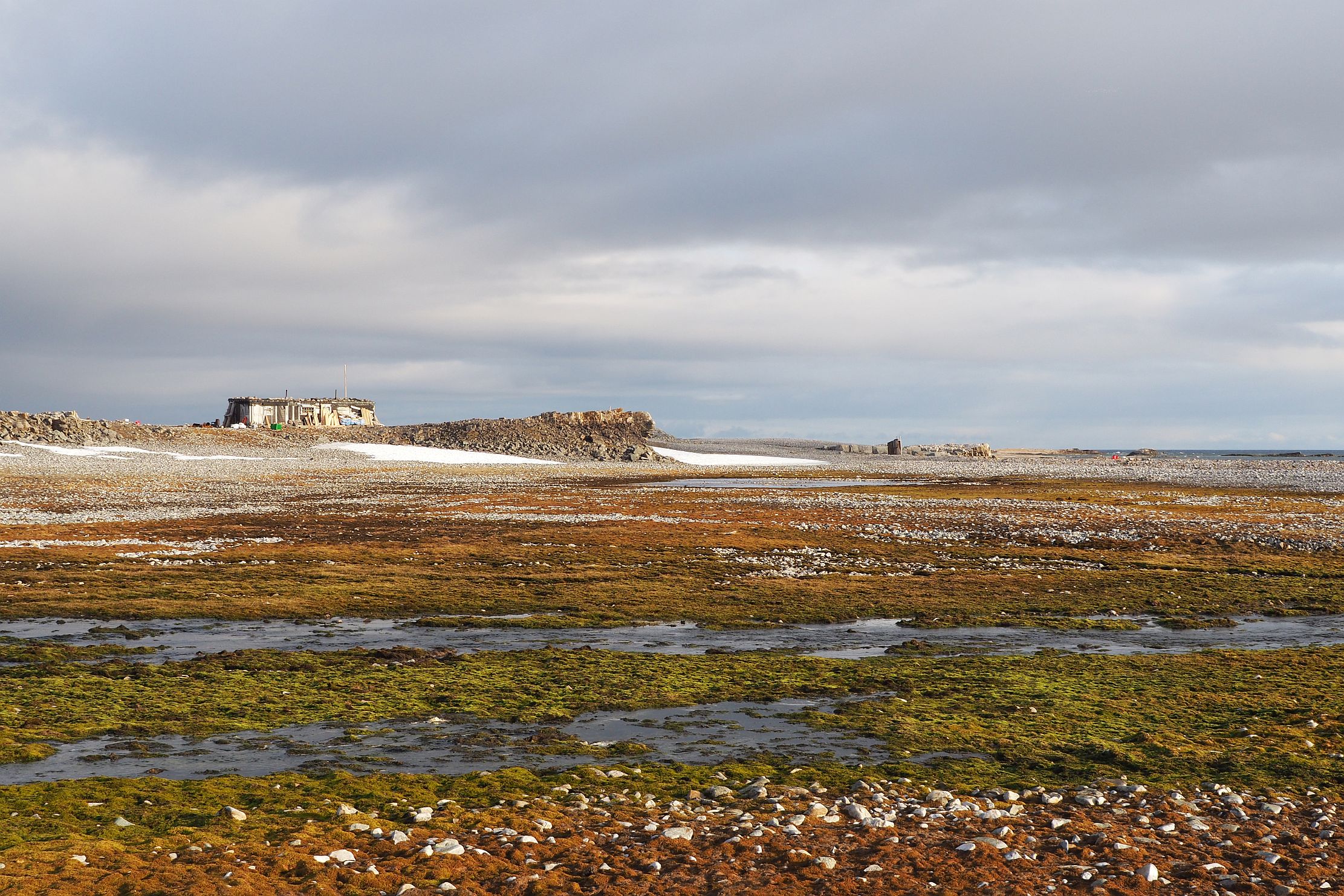In the previous post we explained, among others, where the Awfully Rotten Cabin (or Kapp Horn Hytte, as it’s usually referred to in official records) came from, how it’s changed over the years and what stands behind its shabby, yet still irresistible charm. Today we’ll introduce you to building trends popular among Norwegian trappers and offer some further evidence (if any more is actually needed) that the Arctic is no picnic.
Trapper’s cabins, regardless of their location, tend to be made of wood. The problem is that there are no trees in Svalbard. Not in our sense of the word, at least. The area is covered with tundra, which is characterized by low, stunted vegetation, dominated by mosses and lichens. What’s thought of as trees over there, would raise eyebrows at lower latitudes. The most common “woody plant” in the region is the polar willow (Salix polaris), which may reach the towering height of – brace yourself – 9 cm. As a result, it is a lot more similar to a blueberry bush than to its European cousin, and local demand for woodcutters is severely limited.

© Barbara Jóźwiak, forScience Foundation

© Barbara Jóźwiak, forScience Foundation
Timber required for building purposes has always been imported from overseas, mostly Norway. Svalbard is also littered, however, with wood from far-off Siberia, which gets there by means of the same conveyor belt which is routinely used by Russian litter, namely sea currents. You already know how the litter ends up on the conveyor belt (there was more on the topic in the post entitled “Destination: the Arctic”), but massive wooden logs?
For decades, trees felled in Siberian taiga have been floated down rivers. It’s a tricky process and tree trunks transported in such a manner regularly get out of control. As a result, instead of reaching their destination, they end up in the Arctic Ocean and then – on the rocky beaches of Svalbard.
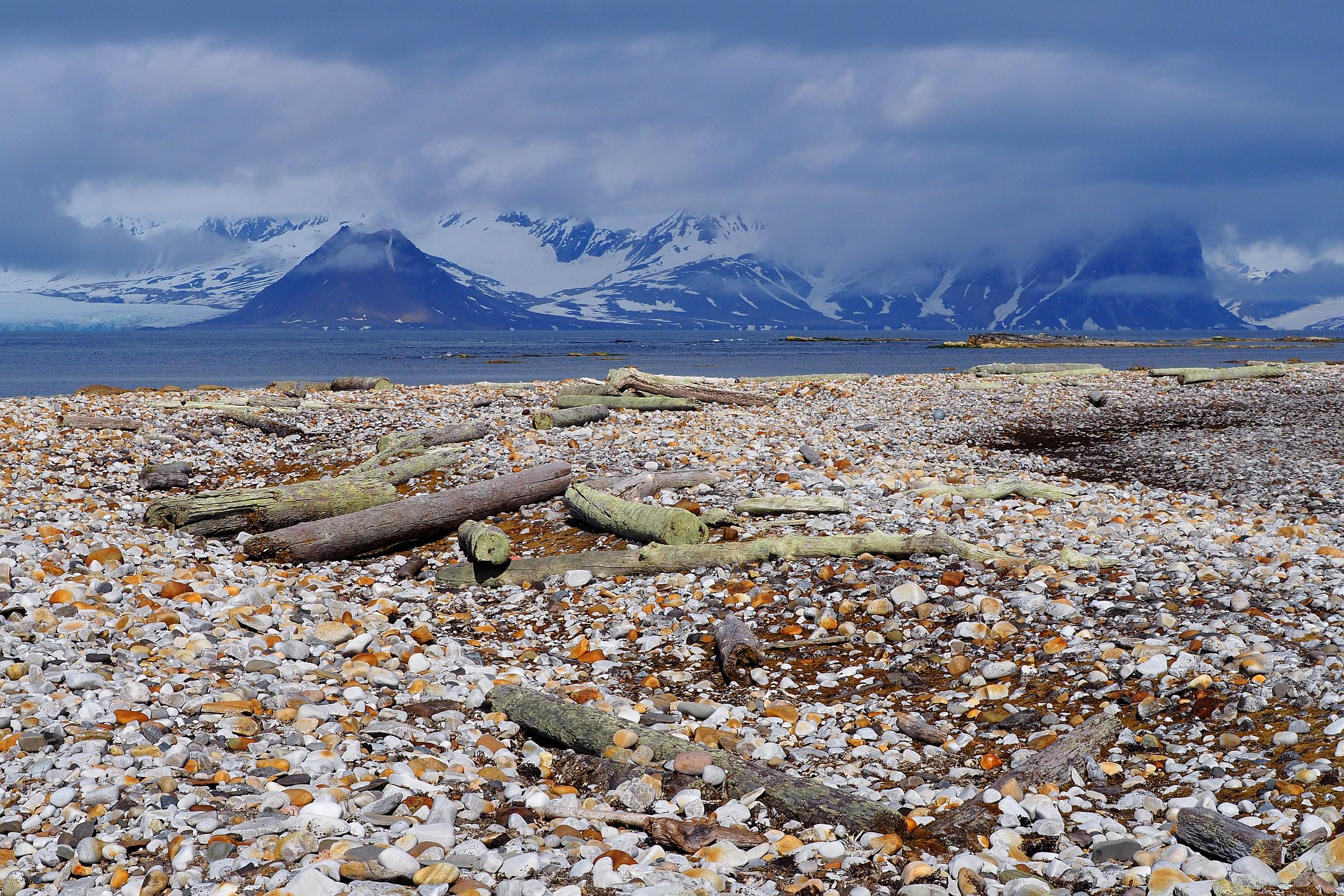
© Barbara Jóźwiak, forScience Foundation
The wood which has drifted to Svalbard from Siberia is the only, save for rocks, easily available building material. It hardly comes as a surprise, therefore, that that’s exactly what much of Kapp Horn Hytte was constructed from.
Driftwood is also used to protect windows and doors against the more inquisitive polar bears. In most cases, this kind of protection is only in place when a cabin is not being used and it must be removed to make it possible for a visitor to enter. Sometimes, however, the massive wooden logs are used to build more permanent protective structures, like those at the entrance to Kapp Horn Hytte or the cabin in Treskelen.

© Adam Nawrot, forScience Foundation
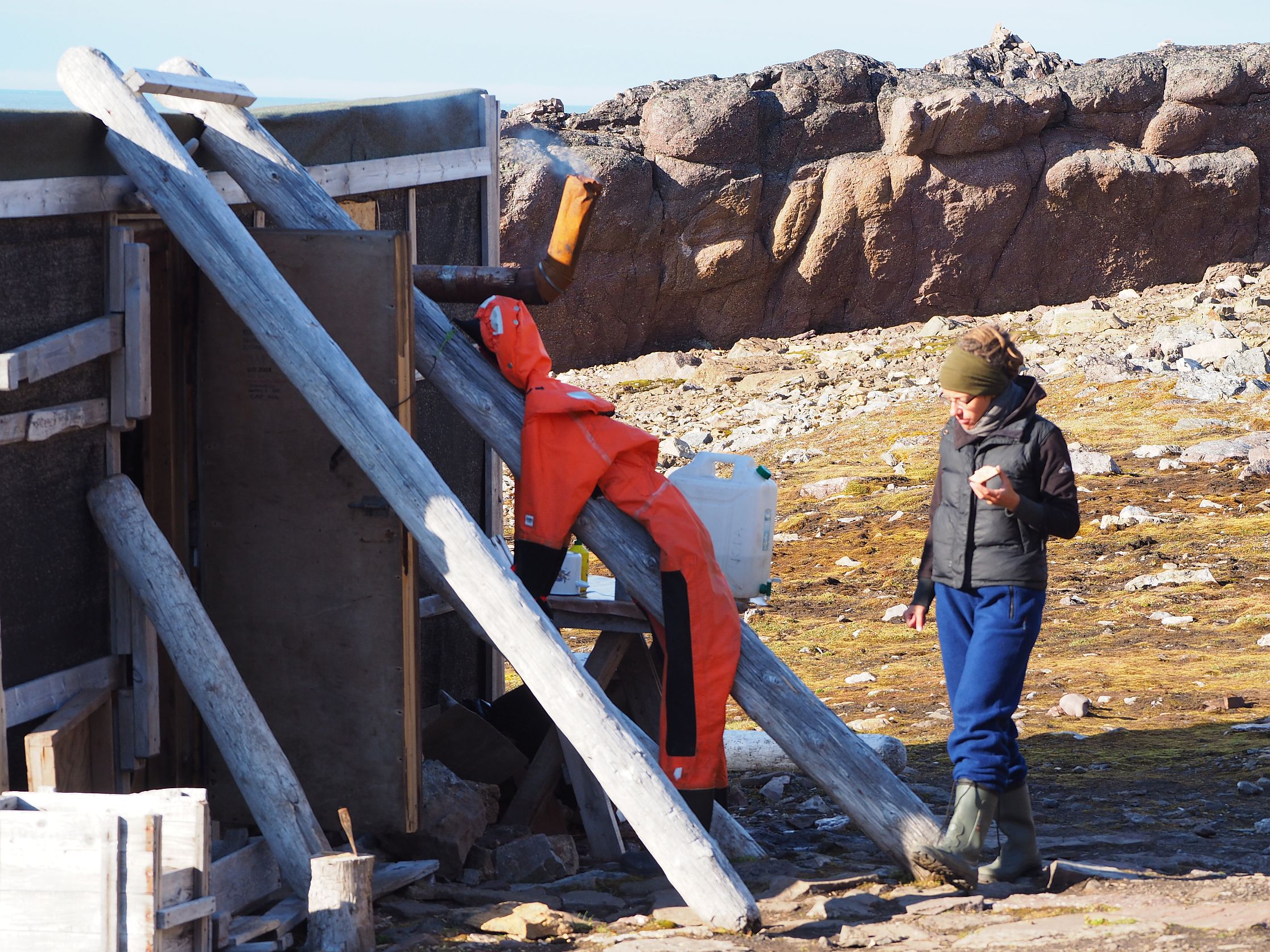
© Adam Nawrot, forScience Foundation
A typical bear won’t fit through the gap between the trunks and won’t manage to squeeze in from the side either. One may hope, therefore, that – having carefully sniffed at every available nook and cranny – the bear will lose interest and walk away. If it does get inside, however, there’s another challenge waiting for it right behind the door: a minuscule anteroom, whose diminutive size should discourage the bear from further explorations.
If we’re unlucky enough to be inside such a cabin, we may help the bear reconsider its intentions by making, for example, a lot of noise (which most of us would probably do even without extra prompting). An alternative strategy, adopted by a Polish polar explorer, was to let the bear know that its visit was not at all welcome by whacking it on the nose with a frying pan.1In keeping with the local law, anyone venturing beyond city limits in Svalbard must be armed. And we don’t mean a frying pan, but an actual gun with actual, live ammunition. It should be kept in mind, however, that polar bears, even though they can definitely be dangerous, are not bloodthirsty monsters. If they come close to us, they are usually driven by curiosity rather than murderous instincts, which is why our first reaction should be to try and scare them away. We should only reach for a gun if everything else fails. Tough guys, be warned. Look through the regulations before you do anything foolish. Legal consequences of unjustified killing of a bear are extremely severe in Svalbard. In this particular case, however, a key factor was that the bear was peeking into the cabin through the window. In other words, the pan-wielding explorer needed only to worry about the intruder’s head, as the rest was still on the other side of a strategically placed wall.
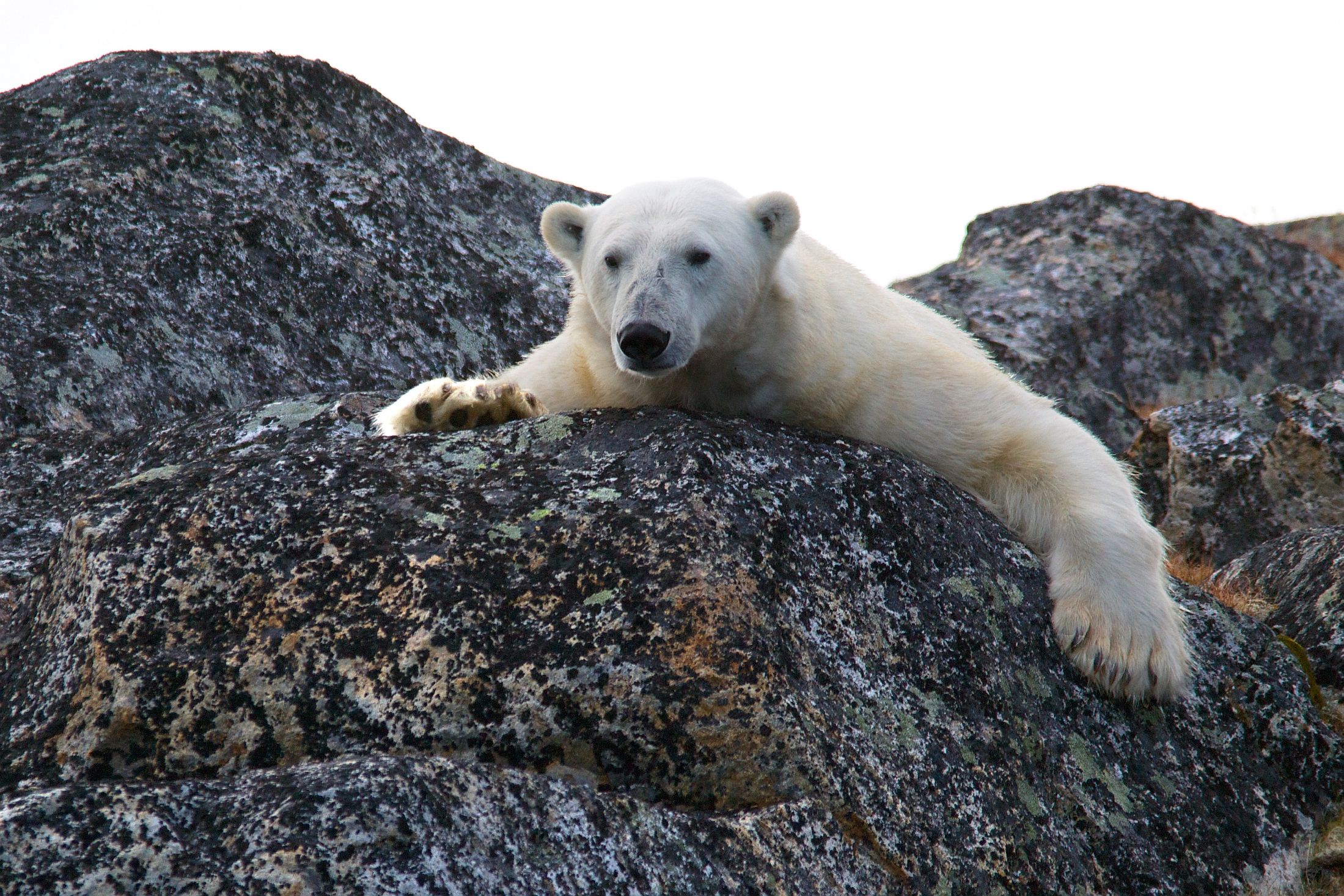
Source: pxhere.com
Windows constitute another characteristic feature of local design. They’re small and rare, with most cabins having no more than one of them. Kapp Horn Hytte has as many as four, which seems like an extraordinary architectural extravagance. They are all equipped with more or less makeshift bars and shutters, which – as we’ve already mentioned – are often additionally secured with sizeable logs of driftwood collected from nearby beaches.

© Adam Nawrot, forScience Foundation
As you can see, many architectural solutions adopted in trapper’s cabins in Svalbard have much to do with the presence (and inherent inquisitiveness) of polar bears. Another crucial factor is the weather. In order to make the structure more stable and watertight, and – by the same token – better able to withstand fierce wind, rain and snow, the cabins were sometimes covered, from top to bottom, with tar paper. It was relatively cheap and easy to do, but it had a few disadvantages. The most serious of them was the fact that, wrapped in tar paper, the buildings could no longer breathe, as a result of which their interiors often grew damp. Besides, despite the additional protection in the form of wooden planks nailed on top of it, much of the tar paper sooner or later succumbed to the wind. As a result, all that’s left of a neat protective layer covering the front section of Kapp Horn Hytte in 1980s are a few tattered shreds clinging desperately to the walls. The cabin in Gnålodden is doing much better in this respect, but – as an element of Svalbard’s protected cultural heritage – it is taken care of by dedicated professionals.
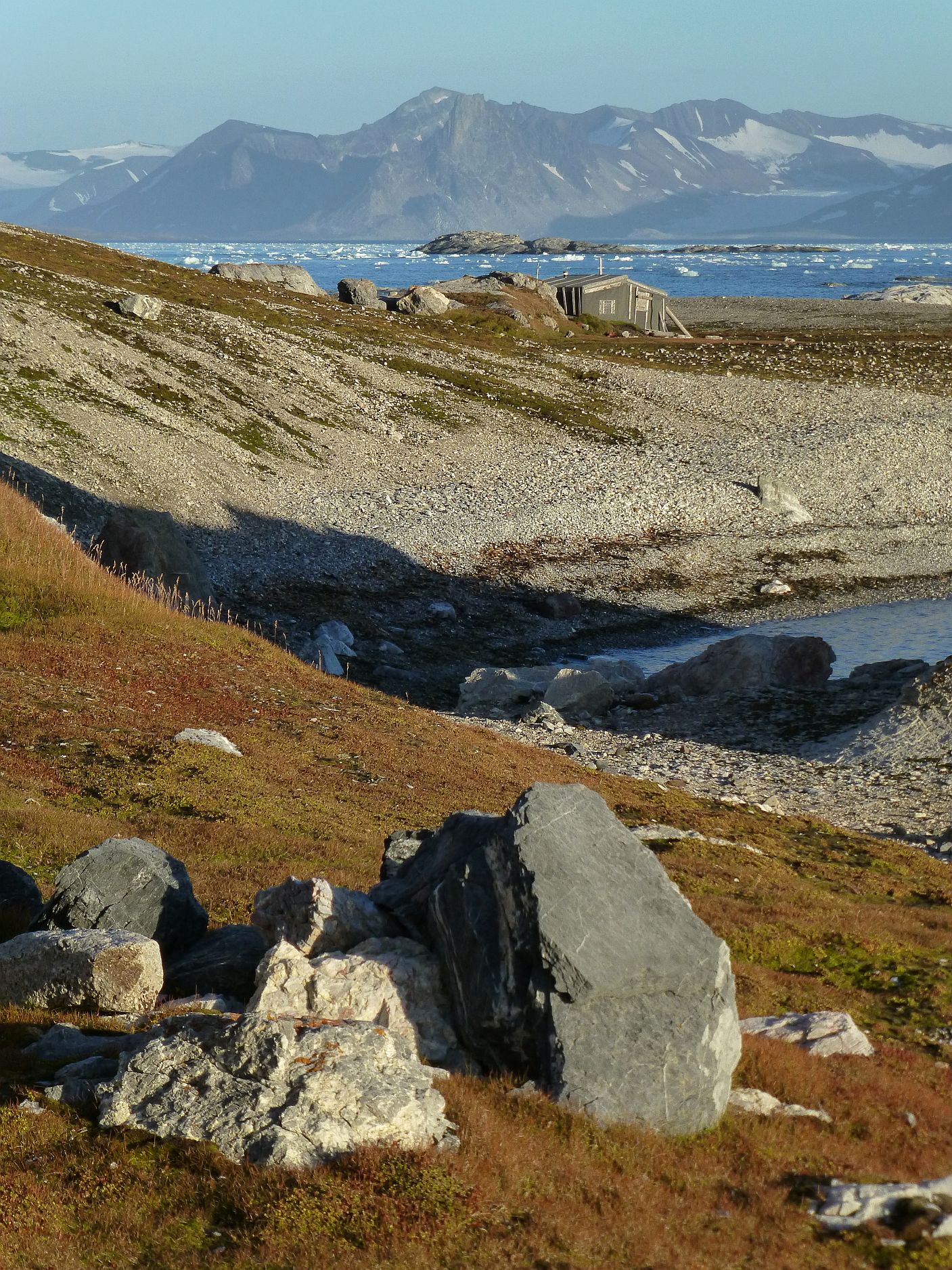
© Barbara Jóźwiak, forScience Foundation

© Barbara Jóźwiak, forScience Foundation
The last essential element of every decent trapper’s cabin is a stove, usually of the pot-bellied kind, which serves as a heater, cooker and dryer. And although it has the annoying habit of changing the inside of the cabin into a smoking chamber, it is absolutely indispensable, even during the Arctic summer. Unfortunately, just like everything else in Svalbard, using a stove also involves a range of difficulties and potential dangers. The most obvious of them is the risk of fire and the prospect of finding oneself, quite literally, out in the cold. Moreover, a stove needs a chimney, which – in turn – requires a hole to be cut in the roof or a wall. For more information on potential consequences of such holes, revisit our previous post.

© Adam Nawrot, forScience Foundation
The final issue is that of firewood. Although driftwood2According to a popular opinion (which, until recently, we also believed to be true), driftwood found within the boundaries of Svalbard’s national parks belongs to the parks and, as such, is under protection. However, after careful study of official documents available on the website of the Governor of Svalbard, we can say with a fair degree of confidence that it’s a myth. The only driftwood which is indeed protected is the old sort which bears the marks of being tampered with and, as such, may be a remnant from human settlements which existed in the area before 1946. scattered along Arctic beaches does usually burn like a dream, Svalbard is hardly beyond the reach of Murphy’s law and it may well happen that there will be none to find in your area. Therefore, in order to avoid unpleasant surprises, it is generally recommended to bring along one’s own supply of firewood. Ours will leave for the Arctic at the beginning of June. It will be sufficient to heat the Awfully Rotten Cabin, the six of us, a good few dinners, and – in case of an epic failure, which we will, mind you, do our best to avoid – there should still be some left for a shelter.
So much about trapper’s cabins. In our next post, we’ll return to the idea behind Sørkapp Marine Litter Cleanup and deal with the question we hear by far the most frequently, namely if our contribution to solving the problem would not be greater if, instead of Svalbard’s beaches, we targeted Polish schools.
P.S. “Hang on a moment!”, you’re probably thinking right now. “And what with the promised, up-to-date pictures from the front?” Unfortunately, life had slightly different plans than we did and the intended check-up visit to Palffyodden had to be cancelled. As a result, all we’ve got for now are a few shots from afar.

May 2019 © Adam Nawrot, forScience Foundation



